Stephen Blank
The recent mutiny by Yevgeny Prigozhin, head of the Wagner mercenary force, generated international concern about the control of Russian nuclear weapons and Russia’s future nuclear policy.1 Therefore we must ask, will Russia change its nuclear policy due to contemporary strategic developments? This question correctly assumes that the war in Ukraine and all its ramifications, despite their undoubted importance, are not the only factors influencing Russian decision-making on nuclear policy. Accordingly, we analyze those factors—including, among others, Russia’s aggression against Ukraine—that will likely influence the direction and nature of Russia’s nuclear policy. Those factors influencing policy, itself the outcome of myriad domestic and foreign pressures, also include Russia’s overall security policies, the global strategic environment, and the lessons Russia learns from recent wars— most prominently its aggression against Ukraine.
Russian national security strategy and policy originate in what Carl Schmitt called the presupposition of unceasing conflict.2 Since the U.S. is Russia’s principal interlocutor, it also is its primary antagonist. Russian security policy is inherently adversarial. It postulates a state of permanent conflict with Washington and its allies where Washington seeks to undermine, if not destroy, the Russian state and prevent it from restoring its empire (i.e., global great power status).
As Deputy Foreign Minister Rybakov recently stated, “Russia’s foreign policy interests as a great power have a global projection. Our country plays a stabilizing role in various regions of the world.”3 Allegedly the U.S. employs nuclear weapons, missile defenses, and advanced conventional weapons that could negate Russia’s nuclear deterrent to frustrate Russia’s policies.4 Thus it is an article of faith in Moscow that its nuclear weapons are the main guarantees of Russia’s sovereignty, territorial integrity, great power status, and the factor that deters the West from intervening against Russia in Ukraine.5 Moreover, those weapons, when deployed abroad, also deter NATO’s potential, largely maritime, threats to Russia. Therefore, Russia must conduct a global military—i.e., an expeditionary, nuclear, and military policy.6 Indeed, Putin has recently and revealingly called nuclear weapons, “the key guarantee of Russia’s
Russian nuclear strategy and behavior derive from a cognitive universe wholly unlike and unfamiliar to American strategic thought.
military security and global stability.”7
Russian nuclear strategy and behavior also derive from a cognitive universe wholly unlike and unfamiliar to American strategic thought. Identical words often mean entirely different things to Russians and Americans; much Russian rhetoric is politicized, deliberately deceptive, or opaque, and invariably follows state requirements. Yet, despite voluminous and even insightful commentary on war, Russian forces often do not fight as its doctrine stipulates, adding to the difficulties involved in determining what its policy is.8 Simultaneously, however, Russian strategy and policy are also inherently evolutionary—i.e., they respond to changes in the strategic environment that are then incorporated into doctrine,
strategy, official statements, exercises, procurement, and policy. Finally, despite our own difficulties in understanding Russia, either willfully or because it cannot help itself due to the deep-seated paranoia in its political culture, equally misreads the West, wholly misunderstands the West, and habitually ascribes the worst motives to U.S. and Western policies.9 This misreading of the West repeatedly generates worst-case threat assessments that frequently lead to Russian nuclear threats or procurements.
Taking all these factors into account, including Russia’s aggression in Ukraine, it is quite likely if not certain that Russian nuclear strategy and policy will change in the wake of the war in Ukraine, win, lose, or draw. Unfortunately, in most potential outcomes
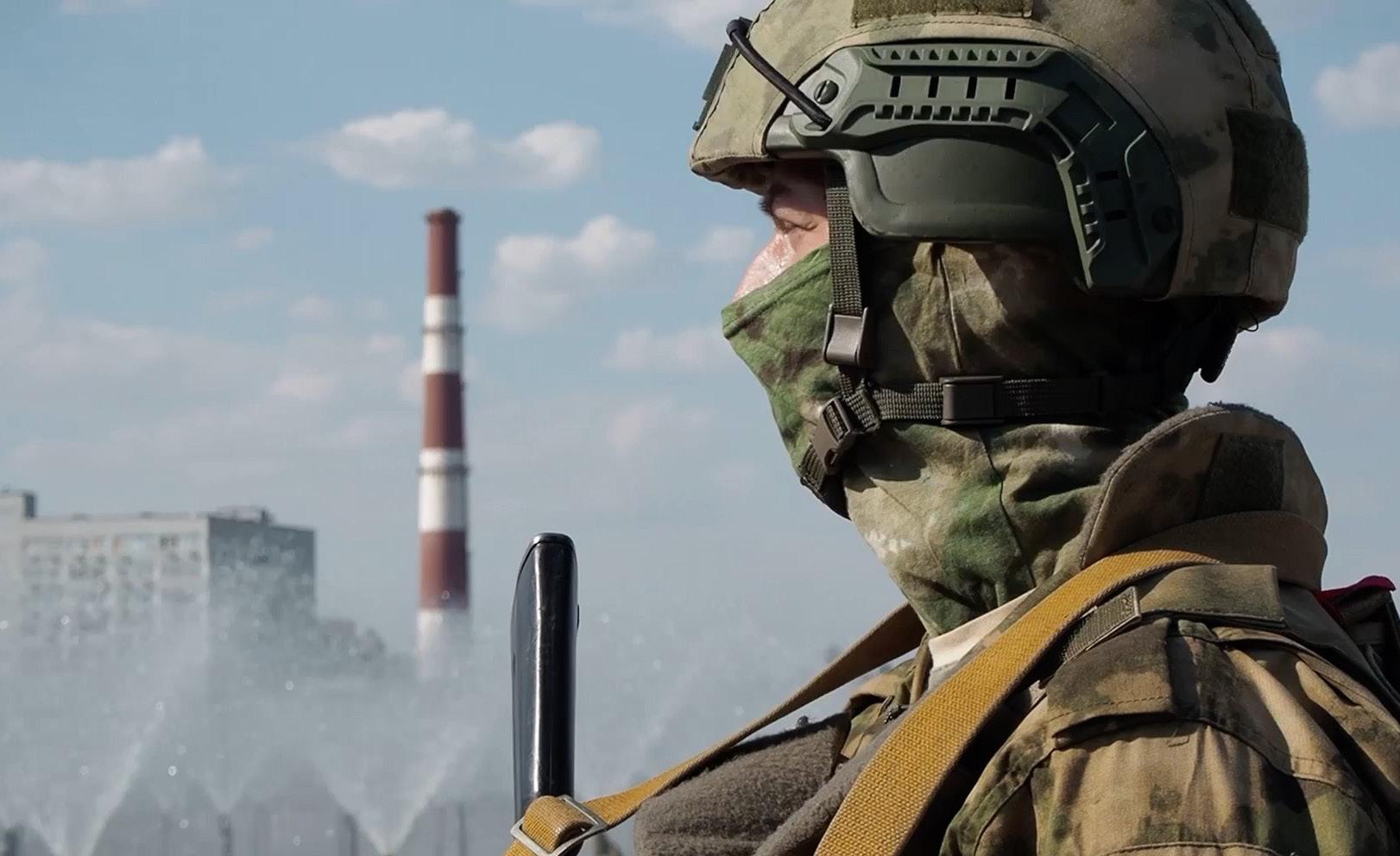
to the war save defeat and collapse of the government, that change points to an enhanced role of nuclear weapons in Russian policy with no letup in hostility toward the West. The war in Ukraine has been instrumental in fostering still more animosity toward the West and an enhanced role for nuclear weapons.10
to see an increase in the utility of nuclear weapons in managing escalation and conflict, increasing the importance of the Kola Peninsula.”13 This leadership perception may have already arrived.
Even before the war led Sweden and Finland to join NATO, they were expanding defense ties with NATO, the U.S., and Nordic neighbors while suspending cooperation with Russia. They clearly were driven by a much greater sense of Russia’s lowered threshold for using force and came to see Russia as a potential aggressor against them.11 Norway, Denmark, and Finland’s acquisition of the F-35 gave these states “unprecedented tactical and operational air coverage of Russia’s Western flank from Murmansk to St. Petersburg.”12 These threats to the Baltic Fleet and the Northern (nuclear) Fleet in Kola, themselves a response to Russian aggression and threats, coupled with the depletion of Russian conventional forces due to the war in Ukraine will “drive the Russian political and military leadership
Putin, with his characteristic penchant for underworld argot, boasted that Russia has more nuclear weapons than the West when he said “to hell with the West and arms control,” and F**ck their weapons.”14 He has also announced the movement of Russian tactical nuclear weapons (TNW) to Belarus although we still have no evidence of this happening.15 Finally, he reiterated that Russian use of nuclear weapons is “theoretically possible” if Russia’s territory, sovereignty, or governmental stability are threatened.16 Since Putin has annexed Crimea and the provinces of Donetsk, Luhansk, Kherson, and Zaporizhia to Russia, his government can claim that threats to those territories meet the aforementioned criteria that warrant a nuclear response. Moscow has already made such threats.17 Although Putin’s statement reiterates Moscow’s 2020 statement of its nuclear policy, this posture rules out both progress on arms control and a less hostile nuclear posture during Putin’s tenure.18 Thus it also presumes a long-term perspective of severe EastWest tensions, not least over nuclear weapons and deployments, especially as there is no discernible basis for arms control negotiations.19 Indeed, many other analysts foresee a long-term conflictual relationship with Russia.20
The war in Ukraine has been instrumental in fostering still more animosity toward the West and an enhanced role for nuclear weapons.
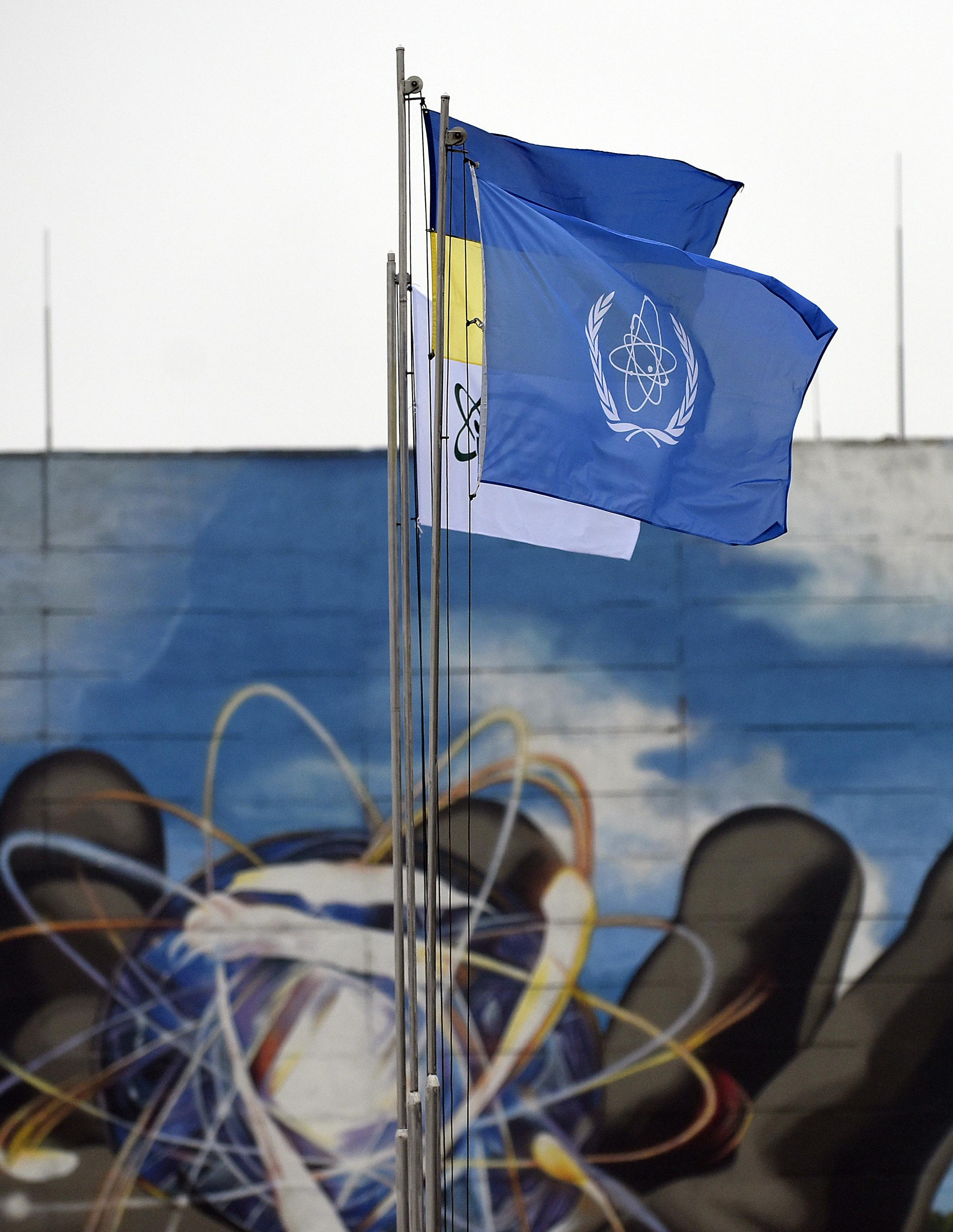 A flag with the symbols of the International Atomic Energy Agency (IAEA) flies on the premises of the Chornobyl Nuclear Power Plant, Kyiv Region, central Ukraine, January 2023. (Reuters)
A flag with the symbols of the International Atomic Energy Agency (IAEA) flies on the premises of the Chornobyl Nuclear Power Plant, Kyiv Region, central Ukraine, January 2023. (Reuters)
Consequently, we should expect these outcomes as long as Putin or members of his team who think like him are ruling Russia. First, Moscow, having de facto neutered Belarus’ sovereignty, will likely transfer nuclear and other weapons and forces to Belarus eventually, and it will likely try to annex it to Russia given Putin’s public statements that Belarussians and Belarus are part of the “triune” group of peoples that comprise the authentic Russia and Russian people.21 Second, and this is particularly likely given the accession of Finland and likely accession of Sweden to NATO membership, Russian nuclear weapons will remain in Kaliningrad where they can directly threaten both these states and FennoSwedish and other NATO forces throughout the Baltic. Third, assuming the incorporation
or attempt to do so of Belarus, the placement of more conventional forces and nuclear weapons that can also reach Nordic and Baltic targets and the need to rely on nuclear and other asymmetric means of combat—e.g., cyber, space-based systems, and political subversion within Sweden and Finland— become greater strategic priorities. Indeed, the systems already deployed in and around Kaliningrad meet that requirement. Fourth, given NATO’s current rearmament in Poland and the Baltic States and the integration of Fenno-Swedish forces into NATO’s planning targeting Russia, the criticality for Russia of deterring NATO by nuclear means from both those theaters, absent sufficient conventional capabilities, rises commensurately.
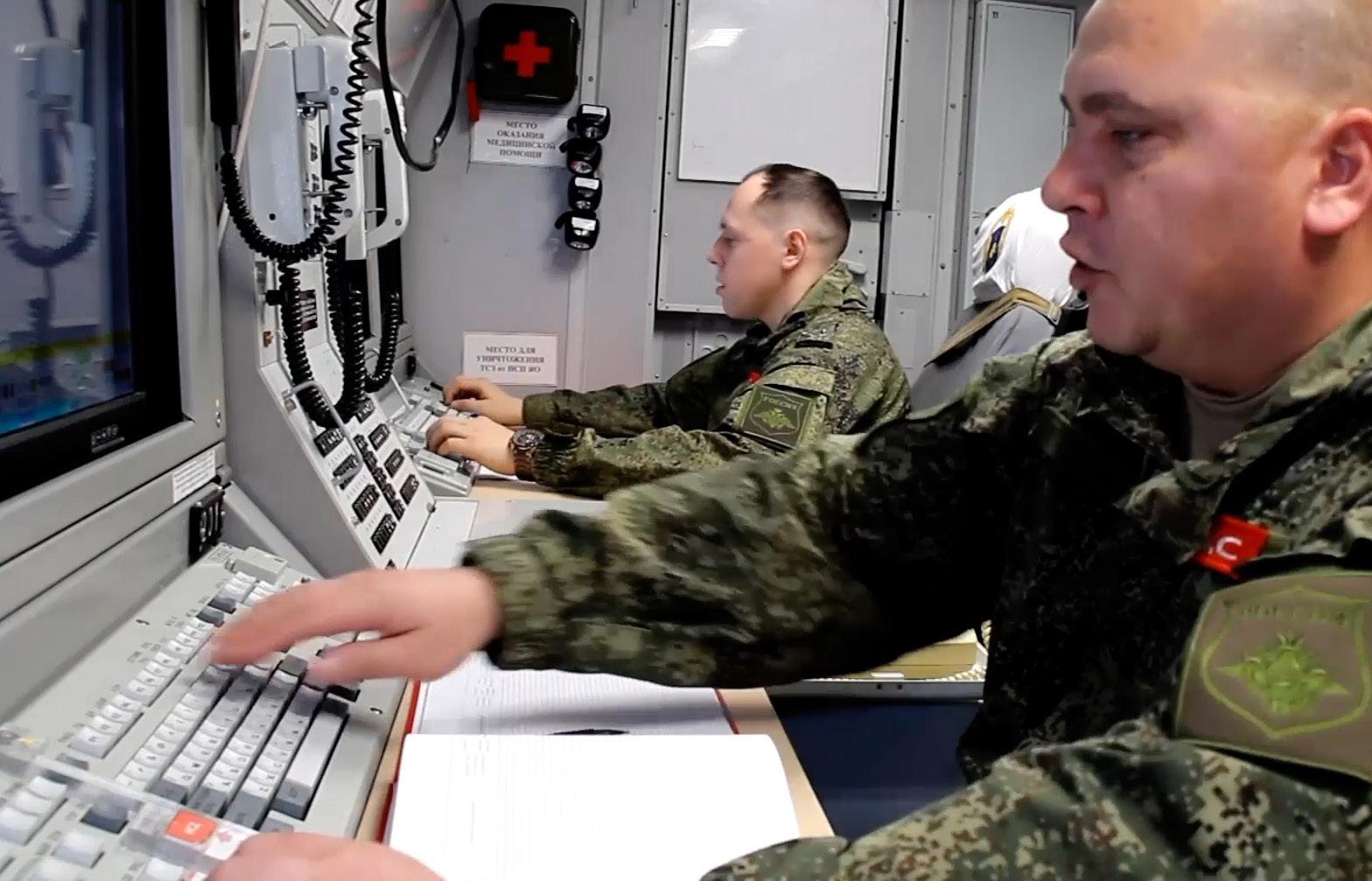
Finally, and fifth, irrespective of the war in Ukraine, Moscow’s power projection policy to the global south, especially the Middle East and Africa, underscores Russia’s growing emphasis on nuclear capabilities. Rybakov recently stated that Russia cannot rule out escalation of crises in the AsiaPacific, Europe, along the entire perimeter of Russian borders (i.e., the Middle East itself a sign of Moscow’s imperial self-presentation), and South Asia.22 Therefore, we should expect a continuing Russian offensive in all these areas. Moscow’s interest in power projection abroad and the accompanying quest for foreign air and particularly naval bases aim to prevent such crises as Rybakov cited while enhancing its foreign standing. But as Russian missiles are now increasingly dual-capable, the power projection mission is also one of deterrence. Any future foreign bases could provide lodgments from which Russian vessels can launch longrange strikes into the Middle East, Eastern Mediterranean, North and Sub-Saharan Africa, and the Indian Ocean, including parts of the Persian Gulf. A key mission would be to deprive U.S. or allied ships stationed in any of these waters from launching (as Moscow expects they would) precision and long-range missile strikes upon Russian territory and assets. These foreign-based ships and their ordnance provide capabilities to project Russian power and influence throughout the Middle East and Africa, and they clearly intend to deter NATO from approaching the Black Sea or firing distance for U.S. or allied missiles upon Russian territory or assets from the Indian Ocean and Red Sea.23 Since those platforms carry dual-capable missiles, Moscow now seeks
(e.g., in Sudan) bases that will allow nuclearpowered and nuclear missile-carrying vessels to deploy there for these nuclearrelated purposes.24 Taken together, all these factors also ultimately point to augmented conventional and nuclear or nuclear-capable forces and capabilities when the defense sector and national economy recover.
Therefore, Moscow will probably brandish even more nuclear threats and adopt an even more anti-Western posture well into the foreseeable future as recent official foreign and national security documents make clear.25 However, we cannot, currently conclusively determine the nature, scope, and final direction of that change in nuclear policy because those questions hinge on factors beyond our control or present capacity to see. Prigozhin’s mutiny underscores this caveat. Had he prevailed, Russian tactics, strategy, and policy in Ukraine would have also changed
Moscow will probably brandish even more nuclear threats and adopt an even more anti-Western posture well into the foreseeable future as recent official foreign and national security documents make clear.
dramatically. These unforeseeable factors include the outcome of the war as well as the domestic situation. If Russia wins, although that is highly unlikely, that means it had permanently gained some Ukrainian territory. That outcome would justify Moscow’s imperial longings and prolong the current state of siege with the West where nuclear weapons and threats play a crucial role. Europe would then become an armed nuclear and conventional camp. But Moscow will probably not place nuclear weapons in any Ukrainian territories that it retained except possibly Crimea because they would immediately become an early target for the West and Ukraine.
In this milieu, reliance on nuclear weapons would nevertheless grow until Moscow could reconstruct its army, navy, air force,
and conventional missile arsenal. But, even after accomplishing that task, assuming an ongoing Putinist domestic political system, the nuclear priority would probably remain given the institutional drive behind that policy, the power of Russia’s nuclear lobby, and the ongoing need to intimidate the West.26 Other factors would also arise and drive policy and strategy in this direction. A Russian victory, as defined here, would likely generate enormous pressure for both the conventional and nuclear rearmament of Europe if not also the U.S. including the return of nuclear weapons to Europe. In turn, and given the necessity to rebuild Russia’s intrinsically inferior conventional weapons over time, Moscow would probably prioritize its nuclear arsenal in the interval. Furthermore, China’s accelerating nuclear program will continue to register
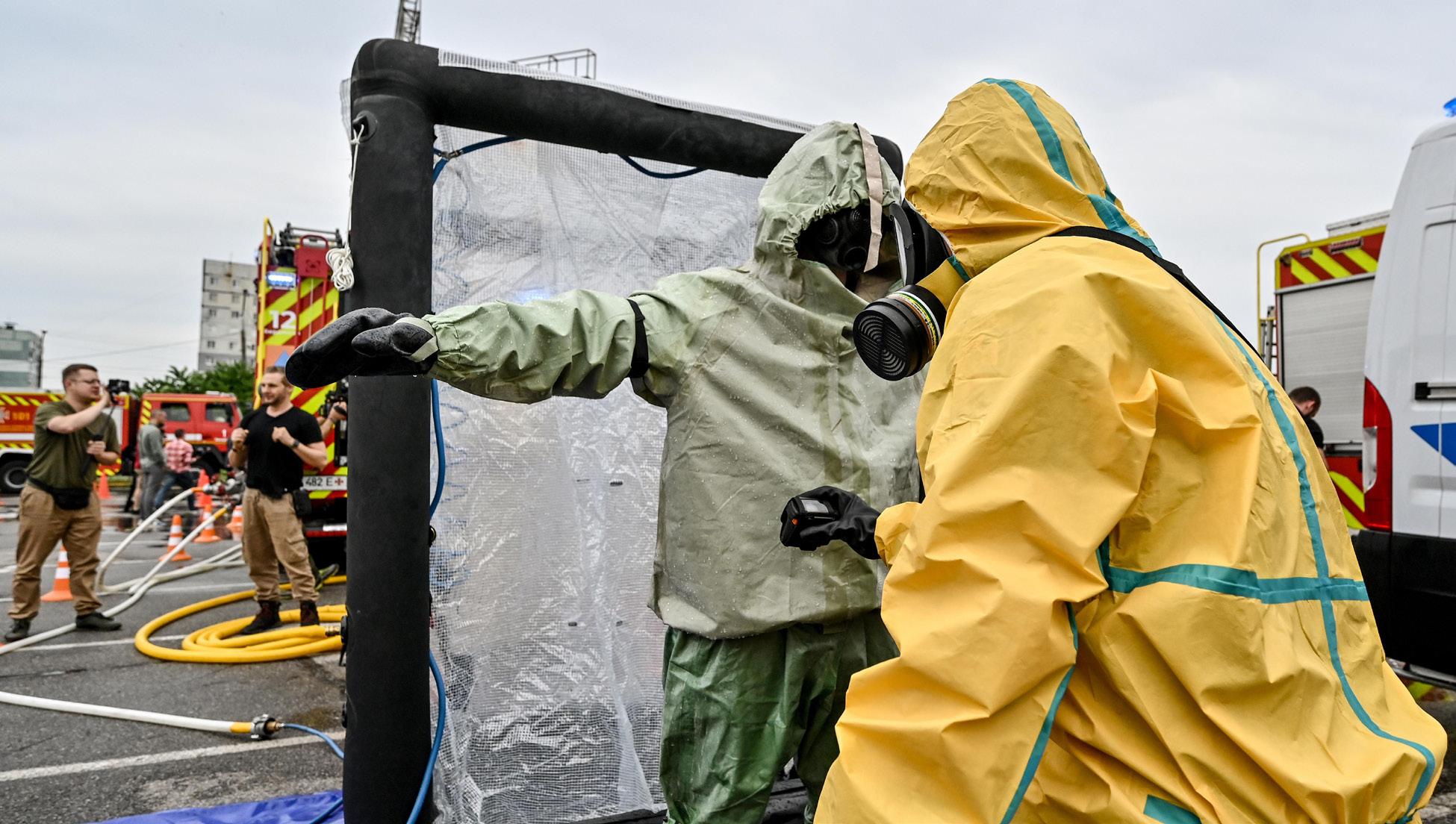
upon Russian planners’ calculations, even granting an alliance of sorts with China that is characterized by Chinese primacy. Indeed, the Russian Far East (RFE) is only defensible by nuclear weapons, and Chinese primacy makes the threat of losing that territory more possible even if both powers are de facto allies.27
Conversely, a Russian loss—the return of all Ukrainian territory as of 2013 to Kyiv—would, assuming the continuity of Putinist-type rule if not that of Putin himself, probably provoke a similar prioritization of nuclear armaments as Moscow assumes a genuinely fortress-like mentality against the West and prioritizes the military and nuclear instrument as part of what might likely be a revanchist security policy.28 On the other hand, a loss that results in an overthrow of the system, not just of Putin the man, would likely generate an entirely unpredictable situation and long-term process where we cannot forecast with any certainty the nature and boundaries of the Russian state let alone its nuclear policy and strategy. Indeed, losing the war will shake the foundations of the state even more than Prigozhin’s mutiny did, ruling out any reliable forecast of nuclear policy. But as recent essays attempting to delineate Russia’s future suggest, the repudiation of Putinism as an outcome depends on a favorable conjuncture of foreign, military, and domestic trends working to favor that repudiation. Therefore, a liberal, democratic Russia is also probably unlikely anytime soon.29
Finally, a draw—i.e., an inconclusive but long-running conventional war—also lends itself to opacity in forecasting Russia’s future nuclear policy since the war’s outcome cannot be foreseen either in terms of the military situation or domestic trends within Russia. However, we do know that some Russian officials and analysts have already advocated a nuclear first strike on Ukraine suggesting a growing unease about the war’s outcome.30
Sergei Karaganov’s recent article advocating a preemptive nuclear strike on Europe to win the war has been attacked by Aleksei Arbatov, one of the most knowledgeable and distinguished Russian experts on nuclear issues, as suggested by certain members of the elite.31 Indeed, Karaganov’s work also ignited a debate over nuclear use within Russia’s think tanks, thus revealing some support for nuclear use.32 Presumably, those strikes would intimidate Kyiv and the West into surrender though many writers believe their argument to be misconceived.33 But as such an escalation could quite conceivably trigger a Western escalatory riposte—either nuclear or conventional—that could then, in turn, generate reciprocal demands, not least among the very well-connected nuclear weapons lobby, for more extensive Russian use of nuclear weapons. Thus, a nuclear exchange with reciprocal escalations might well become a reality that would then drive an enhanced emphasis on usable nuclear weapons.
GLOBAL TRENDS
But even absent this war, other global trends would strongly incline Russian leaders to prioritize new and better nuclear weapons (e.g., systems that could evade or penetrate missile defenses). The intense East-West tensions and absence of any viable framework for bilateral arms control in and of themselves represent powerful arguments for nuclear weapons innovation and priorities that would be powerfully abetted by strong, deeply entrenched, and highly self-interested Russian defense and nuclear lobbies. But the added fact of the war and the domestic rhetoric arising from it that has now “normalized” the use of nuclear weapons enhances the likelihood of policies that emphasize them.34
A second trend favoring emphasis on new and improved nuclear weapons is that the nuclear arsenals of all the nuclear powers are growing and improving qualitatively, thereby revealing their increasing mutual insecurity.35 In Russia’s case, this prioritization of nuclear weapons relates to its imposed official threat perception of the U.S. and to basic problems connected with Russia’s defense. Having postulated an unending American hostility that has gradually morphed into postulating Washington’s desire to destroy the Russian state by the threat of war, it has declared a state of siege with a power, backed up by strong allies, that possesses unquestioned economic-technological-military superiority and could supposedly destroy Russia by
purely conventional means while using its missile defenses to negate Russia’s nuclear arsenal.36 Therefore, nuclear weapons, used in a first-strike mode for limited aims, must take priority in Russian defense policy to deter and intimidate the West in Russian borderlands and also force the West and other states to acknowledge Russia as a great power with an inherent right to intervene in all global issues while conventional forces are rebuilt.
Concurrently, this emphasis on nuclear forces also obliges Russia to seek to negate or match American missile defenses and global conventional strike capabilities with nuclear weapons.37 Apart from threats and exercises that enhance the credibility of nuclear weapons use, and assuming no actual nuclear strikes (that would immediately make such use credible), we
This emphasis on nuclear forces also obliges Russia to seek to negate or match American missile defenses and global conventional strike capabilities with nuclear weapons.
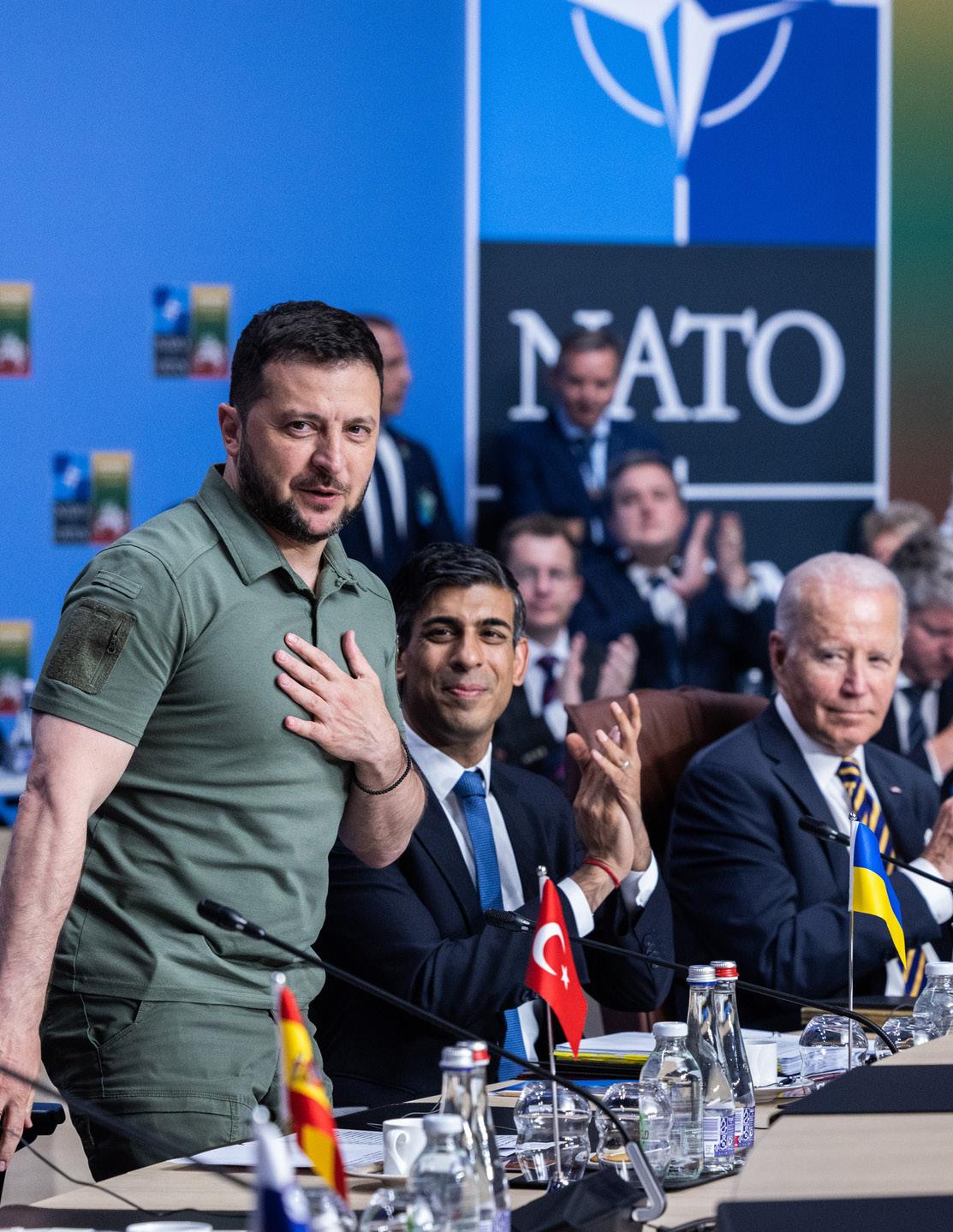 Ukrainian President Volodymyr Zelensky with UK Prime Minister and US President Joe Biden at the NATO summit in Vilnius, July 2023. (NATO)
Ukrainian President Volodymyr Zelensky with UK Prime Minister and US President Joe Biden at the NATO summit in Vilnius, July 2023. (NATO)
can imagine the projection of naval-based nuclear platforms to foreign bases also to enhance credibility.
Russia’s effort to diversify its forces also partakes in an accompanying global trend to diversify the types of nuclear weapons in nuclear states’ arsenals. This trend also stems from proliferators’ ambition to deter if not intimidate the U.S. and its allies. Thus, North Korea is building TNWs, SLBMs and ICBMs to reach the continental United States allegedly to increase its own survivability by wielding the threat of attacking the U.S. as well as South Korea (i.e., as a means of coercion).38 Just as nuclear states have also sought to emulate the U.S. by building missile defenses, they have also striven to build nuclear capabilities that could evade or penetrate those American defenses. Hence the Chinese, Russian, Iranian, and American quest for hypersonic missiles possessing these capabilities. While it is too early to discern any lasting counter-reaction or increased skepticism about hypersonic missiles after U.S. Patriot missiles downed an entire Russian salvo of hypersonic missiles in Ukraine, this trend is not abating because of this incident.39
This diversification of nuclear arsenals and great power renuclearization connect to a third larger, global transformational trend, namely the technological revolutions that are changing the nature of weaponry. Artificial intelligence (AI) too will undoubtedly be a factor here. Russia is not immune to or uninfluenced by these trends, has eagerly participated, and will continue in realizing them however the war in Ukraine ends. This transformation has led to
conventional weapons that are as lethal as nuclear weapons, the onset of drones, and an immense proliferation of sensors and defenses that will make it harder for undetected weapons to enter an enemy’s air space, whether they are land, sea, or air-based missiles. That, in turn, triggers the search for “invulnerable” nuclear weapons.
The rise of cyber capabilities likewise is a major element of this revolution. At one level it makes nuclear command control (C2) facilities more vulnerable to external, surprise, and preemptive strikes that could cripple a nuclear launch before it got off the ground. Thus, cyber capabilities generate possibilities for a nuclear aggressor to take down an entire country or at least its nuclear C2 preemptively in lieu of a first strike. Although Ukraine is not a nuclear power; Russia, possibly with Chinese support, tried this gambit on or around February 23, 2022,
This diversification of nuclear arsenals and great power renuclearization connect to a third larger, global transformational trend, namely the technological revolutions that are changing the nature of weaponry.
striking at critical governmental targets.40 The fear of such a decapitating attack, whether cyber or kinetic, led the Soviet Union to institute the so-called Dead Hand or Perimetr’ system to ride out such a strike and conduct a retaliatory strike; that system still exists in Putin’s Russia.41 Moreover, Russian officials have previously threatened that U.S. cyber activities against Russia could lead to a war between them.42
Another noteworthy trend in this regard is nuclear proliferation. North Korea’s nuclear arsenal has spurred Japanese and South Korean sentiment for counters or even their own nuclear weapon.43 If those powers went nuclear that would place that entire region on a hair trigger especially as China and Russia jointly support North Korea’s program by evading sanctions and providing tangible
and diplomatic resources to Pyongyang.44 Similarly in the Middle East, the growing Iranian-Russian military partnership could lead Moscow to reconsider its previous reservations about Iran’s nuclear programs that could ignite a regional nuclear race or races in the Middle East. Certainly, Iran expects some kind of payoff to its nuclear program in return for providing Russia with hundreds or thousands of drones for use in Ukraine.45 Developments along that line would inevitably generate regional nuclear counter-reactions. For example, Saudi Arabia has already demanded that Washington enhance its nuclear program as a condition of support for a peace agreement with Israel—an outcome that could trigger nuclear reverberations throughout the region, especially as Turkey, too, has talked about
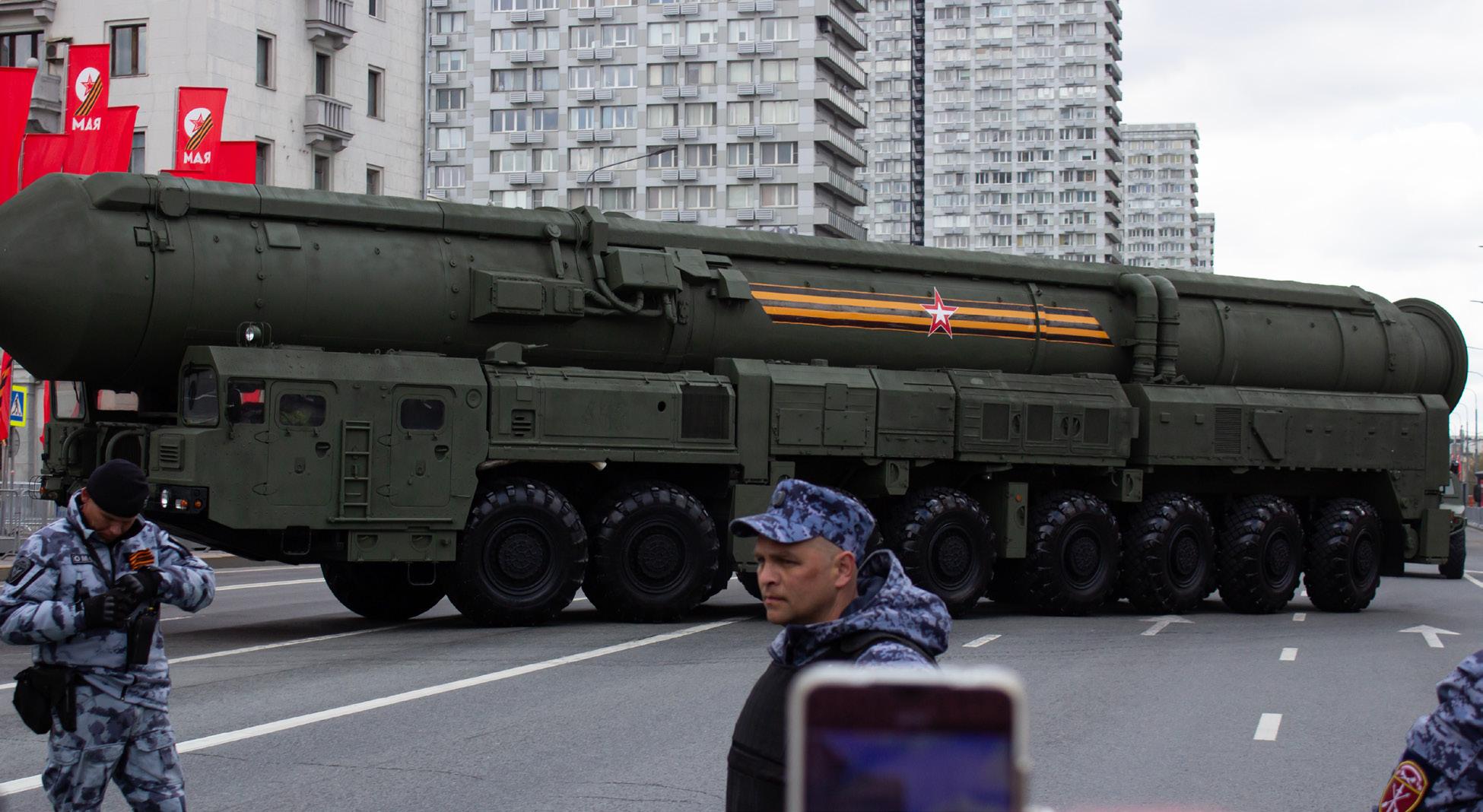
going nuclear.46 Thus global trends facilitate nuclear weapons projects in Northeast Asia and the Middle East. Great power interests are already deeply clashing and increasingly polarized in these areas as the Sino-Russian alliance indicates in Northeast Asia.47 These proliferation projects underscore a rising interest in nuclear weapons as a priority along with the possibility of advanced conventional weapons with lethality that equates to nuclear weapons which are still restricted to a handful of powers.
For countries like Russia that are technologically behind their competitors and rivals, the “entanglement” of advanced conventional and nuclear forces generates powerful drives to use nuclear weapons even in offensive or first-strike modes. Here, the aim is to offset or deter a conventional strike that deprives them of either nuclear retaliation or even paralyzes their national command authorities.48 Moreover, the depletion of conventional forces due to the war in Ukraine will likely drive Russia to emphasize asymmetric strategies and capabilities like cyber, space, information warfare, etc. In Russian thinking, nuclear weapons are indispensable to that strategy. LTC Amos C. Fox (USA) wrote that, the strategic defense provided by Russian nuclear weapons and integrated air defense system facilitates the attainment of all of Russia’s conventional warfare objectives: deterring NATO expansion into Russia’s historic sphere of influence, retaining regional hegemony in Eurasia, and demonstrating improvements to Russian military capabilities.49 That much is obvious, but beyond that:
The presence of nuclear weapons is perhaps the first critical component for modern hybrid warfare. Nuclear weapons provide insurance against a massive ground response to an incremental limited war. The offensive nation that possesses nuclear weapons knows that the adversary or its allies will not likely commit large ground forces to a conflict for fear of the aggressor employing those weapons against ground [or naval-SB] forces. This dynamic emboldens the aggressor nation. In the case of Russia, its possession of nuclear weapons emboldens leaders to take offensive action because they know that even the threat of nuclear employment forces potential adversaries to a standstill.50
Thus, numerous trends in world politics are pushing both would-be proliferators and longtime nuclear players like Russia to prioritize nuclear options even if there was no Russian aggression in Ukraine. But this war has arguably sharpened or aggravated many of the existing contradictions in world politics, making nuclear threats and issues ever more prominent. This last point is almost certainly true for the East-West tensions between Russia and the U.S.
Russian Ministry of Defence officials have claimed they have successfully test-launched their Sarmat intercontinental ballistic missile - the latest addition to weapons that can deploy its nuclear arsenal. The launch comes as Russia is increasingly isolated from the international community due to their invasion of Ukraine and President Vladimir Putin said the new missile would provide “food for thought” for the Kremlin’s enemies. Photo taken April 20, 2022. (Ministry of Defence of the Russian Federation/ Reuters)
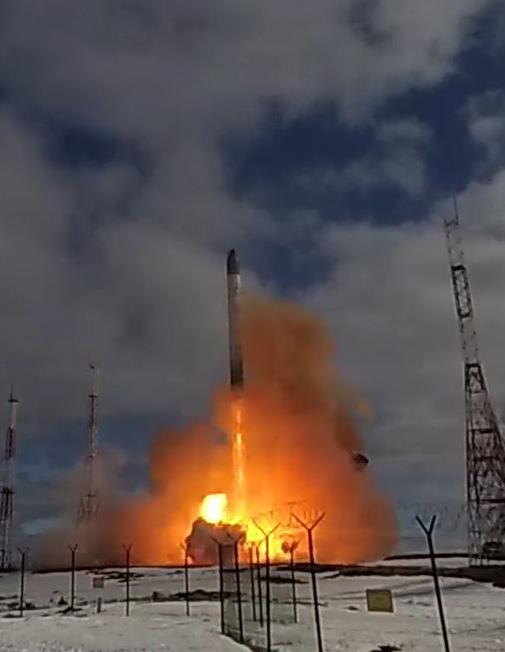
NUCLEAR LESSONS FROM THE WAR IN UKRAINE
Finally, Russian nuclear policy will learn from the war in Ukraine even though nuclear weapons have not yet been used. However, the threat of their use has continued from the onset of hostilities. Thus, Russia is learning important lessons about nuclear signaling. We may delineate four such lessons. First, it has repeatedly used and will continue to use nuclear threats to deter NATO’s direct intervention in the war in accordance with its 2020 statement that the key purpose of such weapons is to deter NATO from intervening in Russia’s sphere of influence.51 Since NATO’s intervention in Kosovo, Moscow has feared that it will exploit any crisis in this sphere to intervene if not for Russia’s nuclear deterrence. And these ongoing nuclear signals have deterred NATO intervention and Ukraine’s membership in NATO and its supply of weapons (e.g., fighter aircraft and long-range strike weapons like ATACMs.
On the other hand, this last aspect of successful deterrence is offering diminishing returns as it is increasingly likely those weapons, if not NATO membership or direct NATO participation, will go to Ukraine.52 Therefore, this element of deterrence succeeded primarily in the early stages of the war. In future conflicts, we will probably see its reappearance at least in the early stages of those events, and this lesson will drive home to Russia the need for winning quickly before NATO can react cohesively to these threats. That lesson, too, in Russian
thinking, logically entails emphasizing credible nuclear weapons threats.
Second, aligned with deterrence is intimidation of NATO by nuclear and other threats. Beyond statements by prominent political or media figures about nuclear threats, Moscow has employed all manner of behaviors to intimidate NATO into deterrence. Deliberately reckless rhetoric, nuclear overflights, exercises, and submarine probes all contribute to this aspect of contemporary war and deterrence. Russia’s embrace of these tactics highlights the fact that the regime’s psychology and character are manifestations of an intimidation culture. As Andrei Soldatov and Irina Borogan observe, “The Putin system is all about intimidation, more often than actual coercion, as an instrument of control.”53 Russia’s emphasis on nuclear weapons relates to this culture and system of intimidation and comports fully with the longstanding element of Russian political culture that relies on the external projection of fear to augment the regime’s domestic support and attenuate the enemy’s base of support and will to resist.54
Here too, Russia has enjoyed genuine— albeit limited—success. NATO has not intervened, but it clearly perceives these threats to have diminishing utility as it has steadily increased its support for and supplies to Ukraine with no Russian reaction. Although there always are elements of
intimidation and deterrence in Russian peacetime and wartime threats, this lesson points again to the importance for Russia to win quickly when its intimidation behaviors will possess their greatest resonance. So, the nuclear “card” will be on the table often and early in any future crises. This suggests a heightened reliance on the naval nuclear assets in the Arctic and in Russia’s ongoing power-projection activities abroad. They are the least damaged forces among the conventional forces while the need to continue making nuclear threats against the West increases the likelihood of a Russian “offensive” in Africa and the Middle East. For example, Foreign Minister Lavrov recently sought bases in Angola and Eritrea which makes no sense other than to project military power into the Atlantic and Indian Oceans.55
The lessons learned from nuclear signaling in Ukraine do not end here. Third, Russian nuclear threats have also been critical instruments of information warfare against Ukraine and the West to achieve this intimidation and serve as an instrument of reflexive control. With this intimidation, Russia can induce enemies through psychological manipulation to make decisions redounding to Russia’s benefit.56 Putin et al.’s many nuclear threats function as a weapon of information warfare by conveying to the West seemingly credible and authoritative information concerning Russia’s capacity and willingness to use them (presumably in a first-strike mode) if the West undertakes operations inimical to Russian interests. That information then engenders the psychological fears that lead to intimidation and deterrence of the West that then lead the West to take actions that actually benefit Russia. Fourth, these nuclear threats are also, then, instruments of reflexive control—i.e., actions undertaken by Russia to lead enemies into acting against their interests and for Russia’s. Yet they do so ostensibly because the information they possess—e.g., the credibility of Russian nuclear threats even though they have not materialized—leads them to think that these actions that benefit Russia are in their own best interest. This is because the U.S. government, if not others, must take Russian nuclear threats seriously as credible threats).57
The nuclear “card” will be on the table often and early in any future crises. This suggests a heightened reliance on the naval nuclear assets in the Arctic and in Russia’s ongoing powerprojection activities abroad.
CONCLUSIONS
The fact that these four conjoined aspects of nuclear signaling have enjoyed some success, even seventeen months into the war, represents a powerful argument for continuing to emphasize nuclear threats into the foreseeable future whatever the outcome of the Ukraine war. Except for the unlikely event of a new ruler who will acknowledge the end of the empire and the need for enduring peace, it is most likely that nuclear forces, along with other so-called asymmetric forces, will continue to dominate defense policymaking until Moscow can rebuild its economy and conventional forces. This posture does not foreclose attempts to gain bases and influence across the global south from which to expand Russian power, influence, and even air- or navalbased nuclear deployments. Quite the contrary, those policies become even more important to Russia even if its resources are constrained. All these policies will also occur within the strategy of “Strategicheskoye Sderzhivanie,” (strategic deterrence, SS).
SS bears only a tenuous connection to American concepts of deterrence. Sderzhivanie means holding back, keeping out, restraining, or even constraining. SS also comports very well with fundamental tendencies in Russian strategic culture and could subsume the prevailing (though often incorrectly applied) term for Russian strategy, hybrid warfare 58 This correspondence with Russian strategic and general cultural traditions and hybrid warfare is discernible
from Russia’s official definition of the term SS:
A coordinated system of military and nonmilitary (political, diplomatic, legal, economic, ideological, scientific-technical, and others) measures taken consecutively or simultaneously . . . with the goal of deterring military action entailing damage of a strategic character. . . . Strategic deterrence is directed at the stabilization of the militarypolitical situation . . . in order to influence an adversary within a predetermined framework, or for the de-escalation of military conflict. . . . The objects to be influenced through strategic deterrence may be the military-political leadership and the population of the potential adversary state (or coalition of states). . . . Strategic-deterrent measures are carried out continuously, both in peacetime and in wartime.59
Thus, the Russian government conducts all these measures in multiple domains simultaneously and continuously, in wartime and peacetime. This definition assumes a condition of near-permanent, if not actual, war at all times and presupposes constant tensions that could explode at any time into actual hostilities.60
Second, the concept aims explicitly at compelling or coercing the enemy to act within a framework that Moscow controls,
thereby also linking SS to the concept of reflexive control that clearly includes the entire domain of information warfare.
Third, SS aims at imposing Moscow’s control on the entire process of deterrence, encompassing prewar and wartime periods, if not postwar times as well. It thus also conforms to Harry Summers’s observation that, “[a]t least from the military perspective, it is well understood that conflict prevention depends on a credible capability for conflict control.”61
Fourth, and in this context, another objective of SS is to use Moscow’s entire arsenal to maintain constant escalation control. The strategy is not an “escalate to de-escalate” strategy, although that is not incompatible
with a broader strategy of escalation control. Fifth, SS represents a conscious ambition or aspiration of Russian planners and leaders to efface the demarcations between offense and defense and between deterrence and coercion.62 Consequently, absent a decisive defeat in Ukraine that forces fundamental changes in Moscow, we can expect continued hostility, a state of siege with the West, and increased reliance upon nuclear and other asymmetric threats. This is an unappealing outcome, but we cannot flinch from analyses that may be unpalatable. Instead, we should brace ourselves for our duties and restore the deterrence that Putin has so wantonly destroyed.
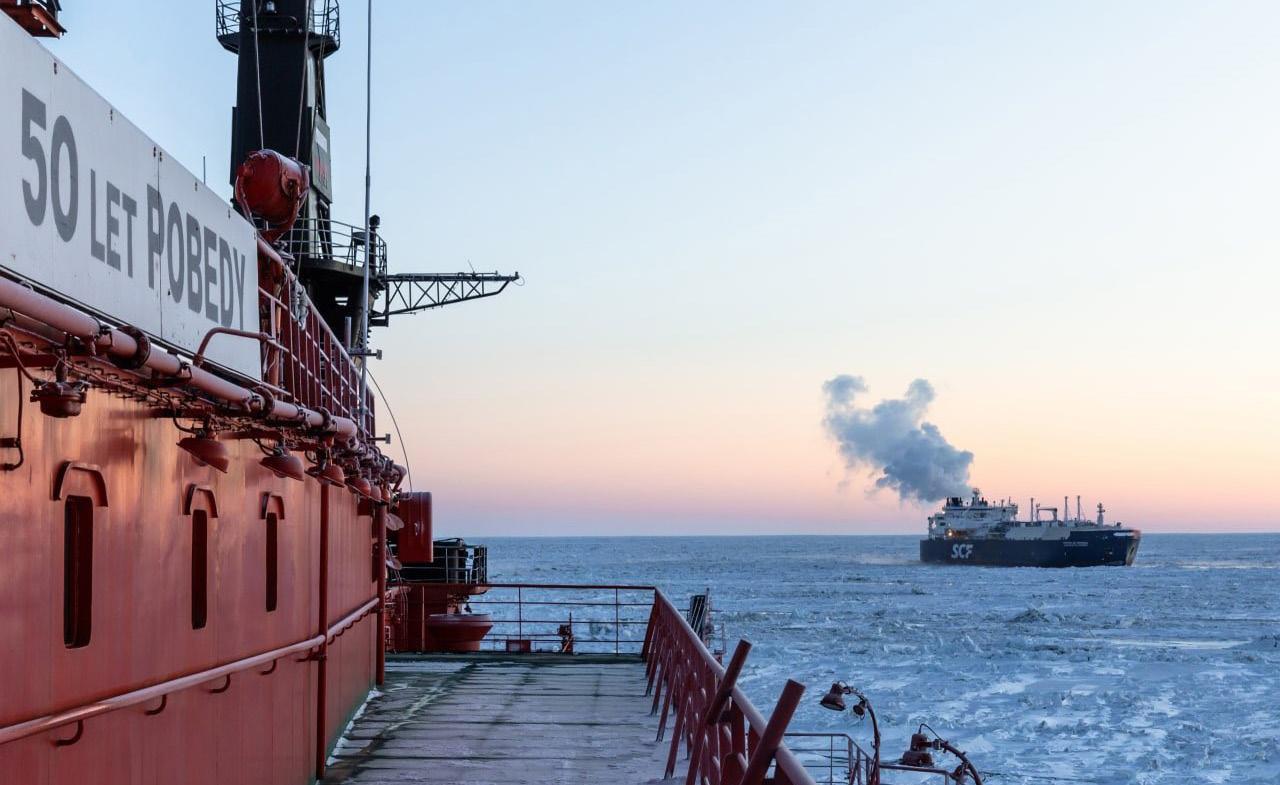
ABOUT THE AUTHOR
Dr. Stephen J. Blank is Senior Fellow at Foreign Policy Research Institute’s Eurasia Program. He has published over 900 articles and monographs on Soviet/Russian, U.S., Asian, and European military and foreign policies, testified frequently before Congress on Russia, China, and Central Asia, consulted for the Central Intelligence Agency, major think tanks and foundations, chaired major international conferences in the U.S. and in Florence; Prague; and London, and has been a commentator on foreign affairs in the media in the U.S. and abroad. He has also advised major corporations on investing in Russia and is a consultant for the Gerson Lehrmann Group.
Stephen has published or edited 15 books, most recently Russo-Chinese Energy Relations: Politics in Command (London: Global Markets Briefing, 2006). He has also published Natural Allies? Regional Security in Asia and Prospects for Indo-American Strategic Cooperation (Carlisle, PA: Strategic Studies Institute, U.S. Army War College, 2005). He is currently completing a book entitled Light From the East: Russia’s Quest for Great Power Status in Asia to be published in 2014 by Ashgate. Dr. Blank is also the author of The Sorcerer as Apprentice: Stalin’s Commissariat of Nationalities (Greenwood, 1994); and the co-editor of The Soviet Military and the Future (Greenwood, 1992).
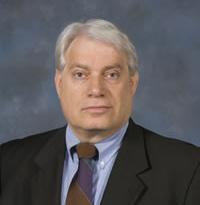
ENDNOTES
1 James Kilner, “US Feared For Russian Nuclear Weapons During Wagner Coup, www.telgraph.co.uk, June 25, 2023; Jason Lemon, “Russian Nukes: Alarms Raised as Kremlin Faces Prigozhin's 'Coup' Attempt,” https://www.msn.com/en-us/news/world/russian-nukes-alarms-raised-as-kremlin-faces-prigozhins-coup-attempt/ar-AA1cZj50, June 24, 2023; “Medvedev: World On Brink Of Catastrophe If Wagner Acquires Russia's Nukes,” Reuters.com, June 24, 2023.
2 “Carl Schmitt: The Philosopher of Conflict Who Inspired Both the Left and the Right,”
https://fee.org/articles/carl-schmitt-the-philosopher-of-conflict-who-inspired-both-the-left-and-the-right/
3 Speech By Deputy Minister Of Foreign Affairs of the Russian Federation Sergey Rybakov At the XXI PIR Center International School On Global Security, www.pircenter.org, June 22, 2023.
4 This is a long-standing Russian threat assessment, “Deputy Defense Minister Antonov Speech At Munich Security Council,” www.opensource.gov, CEP20130212050001, February 6, 2013.
5 Quoted in Keith Payne, Chasing a Grand Illusion: Replacing Deterrence With Disarmament, Foreword, Brad Roberts (Fairfax, VA. National Institute Press, 2023), p. 21.
6 Stephen Blank, ”Gunboat Diplomacy a la Russe: Russia’s Naval Base In Sudan and Its Implications,” https://www.tandfonline.com/doi/full/10.1080/14751798.2022.2122204, Defense & Security Analysis 38, No. 3, 2022, pp. 1–21.
7 “Meeting With Top Graduates Of Higher Military Schools, “ http://en.kremlin.ru/events/president/ news/71472, June 21, 2023.
8 Dmitry (Dima) Adamsky, Russian Nuclear Orthodoxy: Religion, Politics, and Strategy, 1st Edition (Stanford, Ca.: Stanford University Press, 2019).
9 Keir Giles, “Russian Nuclear Intimidation: How Russia Uses Nuclear Threats To Shape Western Responses To Aggression,” www.chathamhouse.org, 2023.
10 Ibid; Adamsky
11 Tom Watling, “Sweden Prepares For ‘Armed Attack From Russia As NATO Bid Stalls,” https://www.express.co.uk/news/world/1782651/Sweden-NATO-Russia-armed-attack-nuclear-weapons, January 20, 2023.
12 Andrea Kendall-Taylor, et al., “Russia In the Arctic; Gauging How Russia’s Invasion Of Ukraine Will Alter Regional Dynamics, www.cnas.org, June 28, 2023, p. 4.
13 Ibid., p. 2.
14 Plenary Session of the St Petersburg International Economic Forum,” http://en.kremlin.ru/events/president/news/71445, June 16, 2023.
15 “Russian Foreign Minister Lavrov: Russia Has the ‘Full Right’ To Deploy Its Tactical Nuclear Weapons in Belarus,” Memri (The Middle East Research Institute), Special Dispatch, No. 10686, June 28, 2023; “NATO Sees No Change In Russian Nuclear Posture Despite Belarus Claims,” www.militarytimes.com, June 15, 2023.
16 Andrew Stanton, “Russia Floats Nuclear Deterrence if Ukraine Attacks Crimea,” https://www.newsweek. com/russia-floats-nuclear-deterrence-if-ukraine-attacks-crimea-1778989, February 4, 2023.
17 Andrew Stanton, “Russia Floats Nuclear Deterrence if Ukraine Attacks Crimea,” https://www.newsweek. com/russia-floats-nuclear-deterrence-if-ukraine-attacks-crimea-1778989, February 4, 2023.
18 Ukaz Prezidenta Rossiiskoi Federatsii: “Ob Osnovakh Gosuydarstvennoi Politikoi Rossiiskoi Federatsii v Oblasti Yadernogo Sderzhivaniia,” www.kremlin.ru, June 2, 2020; In English, “Putin Approves State Policy On Nuclear Deterrence-Text,” BBC Monitoring Former Soviet Union, June 4, 2020.
19 Michaela Dodge, “On Arms Control and Why New START’s Suspension Does Not Really Matter,” National Institute for Public Policy’s Information Series, No. 557, June 19, 2023, https://nipp.org/information_series/michaela-dodge-on-arms-control-and-why-new-starts-suspension-does-not-really-matter-no-557june-19-2023/
20 Chatham House, “How To End Russia’s War On Ukraine,” https://www.chathamhouse.org/2023/06/howend-russias-war-ukraine, 2023.
21 Olesya Zakharova, “Putin’s Dream Of a ‘Triune People’,” www.ridl.io, June 3, 2022.
22 Rybakov, Speech.
23 Stephen Blank, ”Gunboat Diplomacy a la Russe.”
24 Ibid.
25 Ukaz Prezidenta Rossiiskoi Federatsii ot 02.07.2021, No.400, “O Strategii Natsional’noi Bezopastnosti Rossiiskoi Federatsii, “ http://publication.pravo.gov.ru/Document/View/0001202107030001, July 2, 2021; Utverzhdena Morskoi Doktrina, Rossiiskoi Federatsii, July 31, 2022, http://www.kremlin.ru/events/president/ news/69084
26 Adamsky, passim
27 Jacob W. Kipp, “Russia’s Future Arms Control Agenda and Posture,” in Stephen J. Blank, Ed, Russia and the Current State of Arms Control, Carlisle Barracks, Pa.: US Army War College Press, 2011, p. 1–62.
28 Nikolai Sokov, “New START, Hard Stop,” in Mike Albertson and Nikolai Sokov, “Beyond New START: Two Forecasts For Future Russian-US Arms Control, London: IISS, 2023.
29 Andrea Kendall-Taylor and Erica Frantz, “The Treacherous Path To a Better Russia: Ukraine’s Future and Russia’s Fate,” https://www.foreignaffairs.com/russian-federation/treacherous-path-better-russia, July-August, 2023.
30 Dmitry Medvedev, Sergei A. Karaganov, “A Difficult But Necessary Decision,” https://eng.globalaffairs.ru/ articles/a-difficult-but-necessary-decision/
31 Ibid; Alexei Arbatov, Konstantin Bogdanov, and Dmitry Stefanovich, “Nuclear War Is a Bad Way To Solve Problems,” www.kommersant.ru, June 21, 2023; Valery Shiryaev, “Preemptive Strike Of Retribution,” www. novayagazeta.ru, June 19, 2023; Ivan Timofeev, “Preemptive Nuclear Strike? NO,” Russian International Affairs Council, www.russiancouncil.ru, June 19, 2023.
32 Ibid.; Dmitri Trenin, “On a New Global Order and Its Nuclear Dimension,” Russian International Affairs Council, www.russiancouncil.ru, May 30, 2023; Dmitri Trenin, “Ukrainian Conflict and Nuclear Weapons, Russia In Global Affairs, www.globalaffairs.ru, June 20, 2023; “Bring Back the Fear,” Russia In Global Affairs, globalaffairs.ru, September 26, 2022.
33 Ibid.; Arbatov, Bogdanov, Stefanovich, Timofeev.
34 Dmitry Adamsky, “Russia’s New Nuclear Normal: How the Country Has Grown Dangerously Comfortable Brandishing Its Arsenal,” https://www.foreignaffairs.com/russian-federation/russias-new-nuclear-normal, May 19, 2023.
35 “States Invest In Nuclear Arsenals As Geopolitical Relations Deteriorate,” https://www.sipri.org/media/ press-release/2023/states-invest-nuclear-arsenals-geopolitical-relations-deteriorate-new-sipri-yearbook-out-now, June 12, 2023.
36 Brad Roberts, “Strategic Stability Under Obama and Trump,” Survival 59, 4, 2017, pp. 55–57.
37 Stephen Blank, “Reflections On Russian Nuclear Strategy,” in Adam B. Lowther, Ed., Guide To Nuclear Deterrence In the Age Of Great Power Competition, Bossier City, La. Louisiana Tech Research Institute, 2020, pp. 229–243; Inseok Yoo, “Rethinking Nuclear War: Bringing ‘Limited Nuclear War’ To Center Stage,” Korea Journal Of Defense Analysis 33, 2, 2021, p. 227.
38 Duk-Kun Byun, “N.Korea Most Likely To Use Nuclear Weapons As Means Of Coercion: US Intelligence Report,” www.koreaherald.com, June 29, 2023.
39 “Ukraine Air Force Shoots Down 18 Russian Hypersonic Missiles Over Kyiv,” https://www.youtube.com/ watch?v=o_MCry7Njd4, May 16–17, 2023; Brendan Cole, “Russian Nuclear Strategy Has Been Torn To Pieces,” www.newsweek.com, May 16, 2023.
40 Elizabeth Stauffer, “Ukraine Identifies 600 Sites Quietly Compromised By China Just Days Before the Invasion,” https://www.westernjournal.com/ukraine-identifies-600-sites-quietly-compromised-china-just-days-invasion/, April 3, 2022.
41 David E. Hoffman, The Dead Hand: The Untold Story of the Cold War Arms Race and Its Dangerous Legacy, New York: Anchor Books, 2010.
42 Tom O’Connor, “Russia Warns Growing Cyber Conflict With U.S. Could Spark War In Real World,” www. newsweek.com, June 10, 2022.
43 Mason Richey, “Speaking Loudly and Carrying a Small Stick: South Korea Backtracks Over the Nuclear Rubicon,” www.38north.org, April 27, 2023; “Majority In Japan Backs Nuclear Power For First Time Since Fukushima,” https://www.japantimes.co.jp/news/2022/03/28/national/nuke-power-poll/, May 28, 2022.
44 Stephen Blank, “The North Korean Factor in the Sino-Russian Alliance,” in Gilbert Rozman, Ed., Joint U.S.-Korea Academic Studies The East Asian Whirlpool: Kim Jong-Un’s Diplomatic Shake-Up, China’s Sharp Power, And Trump’s Trade Wars, (Washington, D.C.: Korean Economic Institute of America, 2019), pp. 36–59.
45 Stephen Blank, “Russia Emerges As Iran’s Chief Military Patron,” https://cepa.org/article/russia-emergesas-irans-chief-military-patron/, April 28, 2023.
46 John Spacapan, “Conventional Wisdom Says Turkey Won’t Go Nuclear. That Might Be Wrong,” https:// thebulletin.org/2020/07/conventional-wisdom-says-turkey-wont-go-nuclear-that-might-be-wrong/, July 7, 2020.
47 Blank, “The North Korean Factor in the Sino-Russian Alliance,” pp. 36–59.
48 James M. Acton, Alexey Arbatov, Vladimir Dvorkin, Petr Topychkanov, Tong Zhao, Li Bin, Entanglement: Chinese and Russian Perspectives on Non-nuclear Weapons and Nuclear Risks, (Washington, D.C.: Carnegie Endowment, 2017).
49 Ibid. pp. 18–19.
50 Ibid, p. 56.
51 Ukaz Prezidenta Rossiiskoi Federatsii: “Ob Osnovakh Gosuydarstvennoi Politikoi Rossiiskoi Federatsii v Oblasti Yadernogo Sderzhivaniia,”
52 Nick Allen, “US ‘Close To’ Approving Longest Range Missiles Yet To Ukraine,” https://www.tele-
graph.co.uk/world-news/2023/06/29/us-close-to-approving-longest-range-missiles-yet-to-ukraine/?WT. mc_id=e_DM170700&WT.tsrc=email&etype=Edi_USD_New&utmsource=email&utm_medium=Edi_USD_ New20230701&utm_campaign=DM170700, June 29, 2023.
53 Andrei Soldatov and Irina Bogoran, The Red Web: The Struggle between Russia’s Digital Dictators and the New Online Revolutionaries (New York: Public Affairs, 2015), p. 314.
54 Robert Nalbandov, Not by Bread Alone: Russian Foreign Policy under Putin (Washington, DC: Potomac Books, 2016), pp. 19–116; Jacek Durkalec, “Russia’s Evolving Nuclear Strategy and What It Means For Europe,” European Council on Foreign Relations, 5 July 2016, www.ecfr.eu/.
55 Theodore Karasik, “US, Russia’s Struggle for Africa Takes Center Stage – Analysis,” Eurasia Review, January 31, 2023, http://bitly.ws/ACkF
56 Stephen Blank, ”Russian Nuclear Strategy In the Ukraine War: An Interim Report,” https://nipp.org/ wp-content/uploads/2022/06/IS-525.pdf, June 15, 2022.
57 Max Fisher, ‘Thoughts Turn to the Unthinkable: A Spiral into Nuclear War’, New York Times, 17 March 2022, p. A12, www.nytimes.com/.
58 Kristin Ven Bruusgaard, “Russian Strategic Deterrence,” Survival 58, no. 4 (2016), p. 8; Dmitry Adamsky, “Deterrence a La Ruse: Its Uniqueness, Sources, and Implications,” NLARMS Netherlands: Annual Review of Military Studies, ed. F. Osinga and T.Swejis, 2020, pp. 171–73; Okke Geurt Lucassen, “In between War and Peace: The Conceptualisation of Russian Strategic Deterrence,” Uptake, 2019, www.uptake.ut.ee/
59 Military-Encyclopaedic Dictionary of the Russian Ministry of Defense, available at encyclopedia.mil. ru/, as cited by Ven Bruusgaard, p. 11.
60 Ibid., pp. 15–19; Adamsky, “Deterrence a la Ruse,” pp. 172–73; Dmitry (Dima) Adamsky, Cross-Domain Strategy: The Current Russian Art of Strategy, Proliferation Paper 54 (Paris: Institut Francais des Relations Internationales, 2015).
61 Harry G. Summers [Col., USA, (Ret.)], “War: Deter, Fight, Terminate; the Purpose of War Is a Better Peace,” Naval War College Review 39, no. 1 (Winter 1986), p. 20.
62 Ven Bruusgaard, “Russian Strategic Deterrence,” pp. 18–19.
The Foreign Policy Research Institute (FPRI) is a nonpartisan Philadelphia-based think tank dedicated to strengthening U.S. national security and improving American foreign policy.
Established in 1955 by the noted 20th century geopolitical strategist, Ambassador Robert Strausz-Hupé, FPRI was founded on the premise that an informed and educated citizenry is essential for the United States to understand complex international issues and formulate foreign policy. FPRI remains committed to this principle and strives to inform both policymakers and the general public through FPRI research and educational programs.
Eurasia Program Director
Maia Otarashvili
Eurasia Head of Research
Robert E. Hamilton
Design and Production
Natalia Kopytnik
FPRI is a nonpartisan 501(c)(3) non-profit organization and takes no institutional positions on issues and conducts no advocacy. The organization has six main research programs, covering U.S. National Security, the Middle East, Eurasia, Europe, Asia, and Africa. Each program produces reports, articles, public events, and private briefings for policymakers, FPRI members, and the general public.
Cover Art and Production
Cover Art
Natalia Kopytnik
© 2023 by the Foreign Policy Research Institute
123 S. Broad Street, Suite 1920
Philadelphia, PA 19109
215.732.3774
www.fpri.org
@FPRI
FPRI Editorial TeamFOREIGN POLICY RESEARCH INSTITUTE

